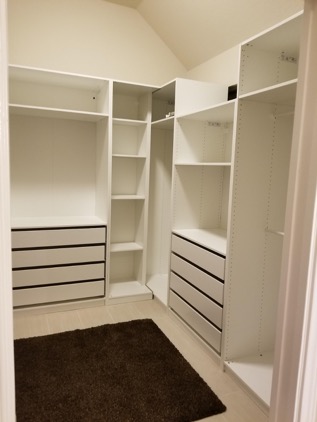The Demand Waterfall: A Modular System to End Chaos
- The demand management process often lacks consistency and alignment on key factors
- The SiriusDecisions Demand Waterfall® is a modular framework designed to bring alignment and consistency to the demand management process
- The Demand Waterfall family includes three versions designed to address a variety of go-to-market strategies
My wife and I are doing some light renovation on our house, and as a weekend project, we recently decided to tackle our master bedroom closet. Our goal was to bring order to the chaos of clothes, shoes, suitcases, Christmas decorations and countless other random items that had made the closet a danger zone.
We started with a trip to our local retailer known for its approach to storage systems to help us design our closet. Their closet system “family” includes some general-purpose frames, which can be filled with various components used for specific tasks (e.g. rods for hanging clothes, drawers for sweaters, racks for shoes, special trays for jewelry). In the store, the individual elements are also bundled together into logical packages tailored to simple or complex storage needs.
Just like closet systems bring order to chaos, the SiriusDecisions Demand Waterfall® is used to bring order to chaotic demand management processes. The Demand Waterfall was designed with modular stages that define key milestones in the demand management process. This allows organizations to customize the Waterfall to meet their demand management process needs. These stages are bundled together into Demand Waterfall versions that are aligned to common go-to-market strategies.
 The recently published e-book The Intelligent Growth Playbook: The SiriusDecisions Demand Waterfall® Family explores the history of the Demand Waterfall as it evolved. The three versions and their purposes include:
The recently published e-book The Intelligent Growth Playbook: The SiriusDecisions Demand Waterfall® Family explores the history of the Demand Waterfall as it evolved. The three versions and their purposes include:
- Version one (the original Waterfall). This version is designed for organizations with a simple demand management process that leverages five core stages. In this process, marketing generates inquiries, with a subset of these designated as marketing qualified leads ready to be sent to sales. Sales accepts these leads, qualifies them to assess readiness to buy and then wins the deal.
- Version two (The Rearchitected Demand Waterfall). This version adds additional stages that provide increased granularity to the marketing qualification phase of the process. The automation qualified lead stage contains leads that have met lead scoring thresholds, and the teleprospecting accepted lead and teleprospecting qualified lead stages provide additional granularity for organizations that utilize either internal or external teleservices resources to qualify leads. In addition, this Waterfall adds additional stages to track teleservices and demand sourced by sales.
- Version three (The Demand Unit WaterfallTM): Brings a new lens to the demand management process. Many B2B buying decisions are made by teams (buying groups), and the Demand Unit Waterfall enables marketers to track the progression of buying groups solving their business needs via demand units. This modular Waterfall also introduces additional stages to track progression earlier in the process (via target demand and active demand stages) before a direct connection with the prospective buying group has been made. This Waterfall is an excellent choice to measure demand in account-based marketing initiatives.
If you need to end the chaos in your demand management process, start by checking out the Demand Waterfall Playbook. This resource provides guidance on how to select the right version of the Demand Waterfall that best meets your needs. It also provides insight on key Demand Waterfall use cases (e.g. performance measurement process diagnostics, revenue forecasting, demand planning). Follow the guidance from the playbook, and you’ll surely have a neat and tidy demand management process.
And yes, after 30 days, that closet in our home is now filling up – but it’s still organized and looks great!
